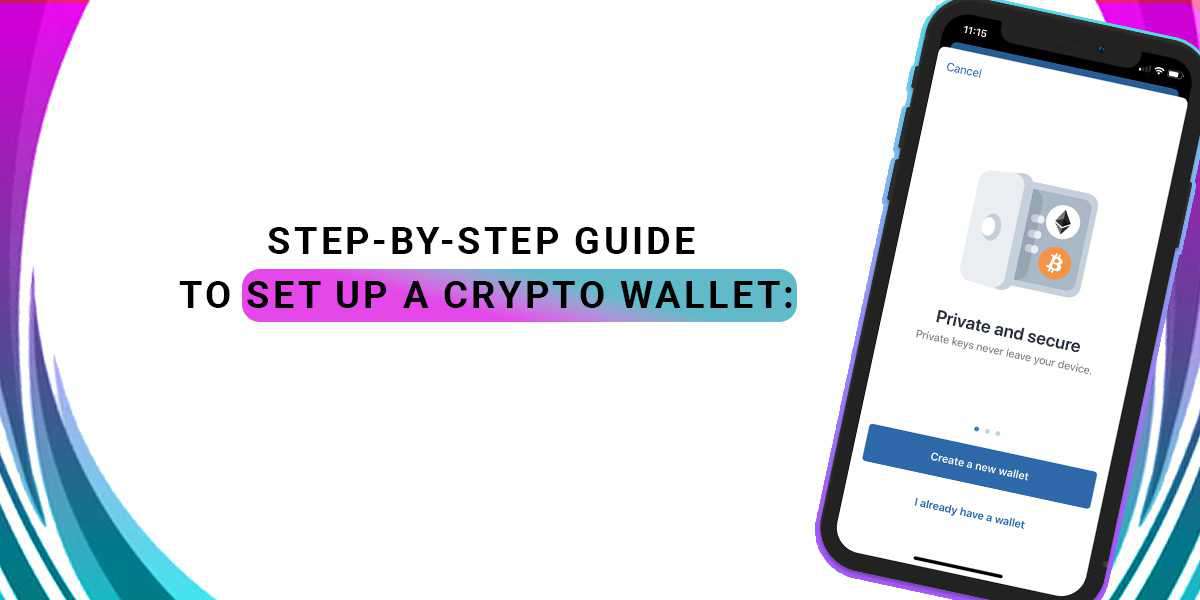Crypto Wallet
In recent years, cryptocurrencies have gained tremendous popularity as an alternative form of digital currency. To engage in the world of cryptocurrencies, one must understand the significance of crypto wallets. A crypto wallet is a secure digital wallet that allows users to store, send, and receive their digital assets. If you're new to cryptocurrencies and want to set up a crypto wallet, this step-by-step guide will walk you through the process.
Step By Step Process Of Set Up a Crypto Wallet
Step 1: Understand the Types of Crypto Wallets
Before diving into setting up a crypto wallet, it's essential to familiarize yourself with the different types available. There are mainly five types of crypto wallets:
- Hardware Wallets: These physical devices store your private keys offline and provide excellent security.
- Software Wallets: These wallets are downloadable applications or software programs that can be installed on your desktop or mobile device.
- Web Wallets: These wallets are online platforms accessible through a web browser. They are convenient but less secure than other types.
- Paper Wallets: A paper wallet involves printing out your private and public keys on paper. It's a secure way to store cryptocurrencies offline.
- Brain Wallets: Brain wallets allow users to remember their private keys as a passphrase. Caution should be exercised with this type of wallet as they are prone to hacking attempts.
Step 2: Research and Choose a Wallet
Once you've understood the types of wallets available, it's time to research and choose the most suitable one for your needs. Consider factors such as security, convenience, supported cryptocurrencies, user-friendliness, and the reputation of the wallet provider. Popular and trusted wallets include Ledger Nano X (hardware), Exodus (software), MyEtherWallet (web), and BitAddress (paper).
Step 3: Download or Access the Wallet
After selecting a wallet, proceed to download or access it depending on the type you've chosen. If you've opted for a hardware wallet, follow the manufacturer's instructions to set it up and connect it to your computer or mobile device. For software wallets, visit the official website and download the application for your operating system. Web wallets can be accessed by visiting the wallet's website, while paper wallets can be generated through dedicated online services.
Step 4: Create a New Wallet
Once you've downloaded or accessed your chosen wallet, it's time to create a new wallet. Follow the on-screen instructions, which typically involve creating a strong password or passphrase. Ensure your password is unique and secure to protect your funds.
Step 5: Backup Your Wallet
Backing up your wallet is crucial in case you lose your device or forget your password. Most wallets provide a backup option during the setup process. Follow the instructions to create a backup, usually in the form of a recovery phrase or a file. Store this backup securely in multiple locations, such as encrypted external storage devices or paper copies stored in separate physical locations.
Step 6: Fund Your Wallet
To start using your wallet, you'll need to add funds to it. Depending on the wallet, you'll find options to receive or deposit cryptocurrencies. Each cryptocurrency has its unique address, which acts as a destination for receiving funds. Copy the address provided by your wallet and use it to transfer funds from an exchange or another wallet.
Step 7: Test and Secure Your Wallet
After funding your wallet, it's a good practice to test its functionality by sending a small amount of cryptocurrency to another wallet you own or to a trusted friend. This ensures that your wallet is set up correctly and functioning properly.
Additionally, reinforce the security of your wallet by enabling two-factor authentication (2FA) if available. Regularly update your wallet software and use reputable security software to protect against malware and phishing attempts.
Conclusion:
Setting up a crypto wallet is a crucial step in entering the world of cryptocurrencies. By understanding the types of wallets, choosing a reputable provider, and following the step-by-step instructions provided by the wallet, you can create a secure and reliable crypto wallet. Remember to always prioritize security, backup your wallet, and stay informed about the latest best practices to safeguard your digital assets. Happy crypto wallet setup!
Content Source: https://bitcoinatmsupportus.blogspot.com/2023/07/how-to-set-up-crypto-wallet-bitcoin-atm.html








